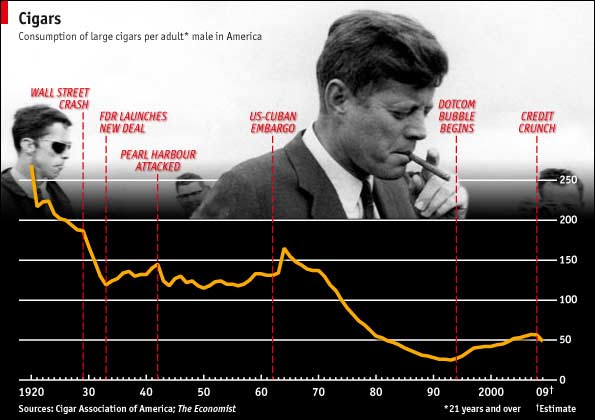within the world

“Perhaps most troubling,” says the report, “the FBI could not determine in many cases whether the lost or stolen laptop computers contained sensitive or classified information. Such information may include case information, personal identifying information, or classified information on FBI operations.” Laptops can also contain goodies like the software that the FBI uses to make its identification badges, a copy of which was installed on a laptop stolen from the Boston Field Office in July 2002.
In the 44 months that it took to complete the new audit, the FBI lost 160 weapons and 160 laptop computers—a massive improvement over the 354 weapons and 317 laptops lost during the first 28-month-long audit. In any organization the size of the FBI, equipment is going to be lost, misplaced, or stolen, so perfection is not to be expected.
{ Ars Technica, 2007 | Continue reading }
U.S., incidents, technology, uh oh | March 17th, 2010 8:12 pm

In movies when they show a person walking down a crowded New York sidewalk the people are always mysteriously headed in the same direction. Navigation is actually a little more complicated than that.
{ S Shirazi | Continue reading | Courtesy of Daniel S. L., who wrote: “ Interesting dissection/take down of Starbucks at 39 . The clean bathrooms shouldn’t be undersold, however. In NYC Starbucks basically serve as the city’s only reliable facilities.” }
photo { Gosia Wieruszewska }
ideas, new york | March 11th, 2010 4:57 pm

{ New Charging Method Could Slash Battery Recharge Times | The Physics arXiv Blog | full story }
photo { A Department of Defense satellite image of the Korean Peninsula showing wide illuminated areas in South Korea and the relative darkness of the North, September 2003 | Jason Reed/Reuters }
asia, technology | March 11th, 2010 4:47 pm
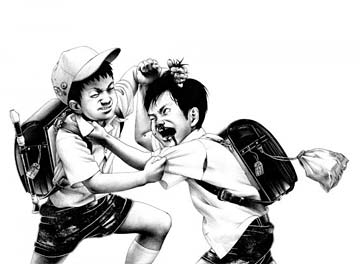
In the era of globalization, the land of the samurai and the salaryman has acquired a strange new identity. Japan now shows itself to the world as a country of “pink-clad girls, animated fantasies, and winking Kitty logos,” writes Christine R. Yano, a professor of anthropology at the University of Hawaii.
Kawaii, or “Japanese cute,” has become a global phenomenon. The rage for cute stretches from the prepubescent haunts of the world’s shopping malls to the catwalks of haute couture. At New York City’s Fashion Week last year, one show featured the work of 30 cutting-edge designers inspired by Hello Kitty, the iconic mouthless cartoon kitten that engendered Japanese cute. In Times Square, shoppers flocked to a newly opened Sanrio Luxe boutique peddling diamond-encrusted Hello Kitty watches and fine luggage.
Sanrio is the company that launched Hello Kitty and the whole cute phenomenon in the 1970s. Founder Tsuji Shinitarou saw the cartoon figure as “the Japanese cat that would overtake the American mouse,” according to Yano. He is the de facto father of “pink globalization.”
{ The Wilson Quaterly | Continue reading }
asia, fashion | March 11th, 2010 4:00 pm
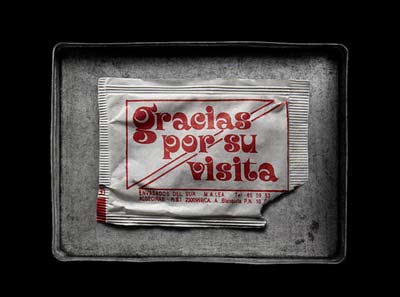
When I was single, I toured around Japan while between jobs, and early in my trip hooked up with a couple of fellow Americans—a former college basketball player and multi-millionaire heir, and his girlfriend, an IBM salesperson. He was about 6’5”; she was 6’1”, ponytailed, and looked like a beach volleyball player. I’m 6’3”.
In just the past generation, the Japanese have pretty much caught up with Westerners in terms of height, but 22 years ago, people of our size were still a novelty, and the three of us were mobbed on a couple of occasions—I have some photographs of the millionaire’s girlfriend and me in a parking lot at Mt. Fuji surrounded by high-school girls clamoring for our autographs merely because of our foreignness and our parents’ foresight in deeding us tall genes. (…)
Lastly, whether they are drunk or sober, Japan’s people are at once welcoming and friendly, and yet incredibly prone to either cause foreigners to act in foolish ways, or to act, themselves, in foolish ways in front of foreigners.
{ Michael Antman/Pop Matters | Continue reading }
asia, experience | March 11th, 2010 8:27 am
asia, relationships, weirdos | March 10th, 2010 10:40 am

The human form, disrobed and displayed in all its glory, is arguably the most enduring motif in the history of Western art. Museums dedicated to art both ancient and modern are filled with nudes rendered every which way: painted, chiseled, molded, sketched and photographed. They’re just usually not living and breathing. But come March 14, New York’s Museum of Modern Art will host daily performances of five seminal works by Marina Abramović, three of which feature performers in the altogether. In Imponderabilia (1977), two players stand opposite each other, au naturel, in a narrow doorway. Visitors must brush past them to enter the exhibition—an early, if awkward, example of interactive art.
“This is America!” the Yugoslavian-born Abramović trills jovially in her heavily accented English, on a rainy fall day in New York, as she considers the potentially embarrassing encounter in what will be the first live exhibition of nudes in the museum’s history. “Is going to be riots! I have so many meetings with the security of MoMA and how we’re going to deal with things.”
In all fairness, yes, Americans have a more delicate relationship with nakedness than Europeans, but Abramović acknowledges that when she and her former collaborator and lover, Ulay, performed the piece at a museum in Bologna, Italy, the police showed up six hours into it, asked to see their passports (which they obviously didn’t have on them) and promptly shut down the performance. This time around, regulations mandate that MoMA provide a second route into the exhibition—one with a wider opening to allow for wheelchairs—a measure Abramović finds understandable but disappointing. “I hate that alternative because in the original piece there was no alternative—you go here,” she says, seated in her midtown office as she points to a photograph of Ulay and herself, face-to-face in the passageway, while a man turned slightly sideways tries to negotiate the cramped space. Even so, Abramović has come up with one small tweak: Though the original conceit paired a man and a woman, she now plans to mix up the couples taking turns performing Imponderabilia so that some are same-sex.
At 64, Abramović is the doyenne of performance art, a true believer who has literally risked her life more than once in fealty to her work. Decades after her peers segued exclusively into other—typically more lucrative—art forms, she is still constructing new performances, though she does dabble in other mediums. For the MoMA retrospective, the 36 hired players will rotate every two and a half hours to allow for breaks, while Abramović herself will perform a new work nonstop during museum hours for the duration of the exhibition. That’s seven and a half hours a day, five days a week; 10 hours on Friday. For three months. “The idea is that we are there before the museum opens, and we are there when the museum closes,” she says. “The attitude is the same as toward a painting—the performance is always there. It’s never been done that way for three months, ever, in history.”
{ W | Continue reading | More: NY Times | NY Times video }
related { Nude Statues Installed On Rooftops In NYC }
photo { Rebekka Guðleifsdóttir }
art, ideas, new york | March 10th, 2010 8:32 am
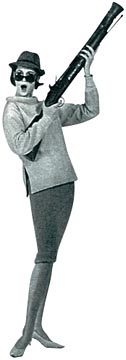
A Detroit neighborhood fights for its life, and an ex-cop leads the way
Jackson knows that, in Michigan, the law says that if your life’s in danger, you have a right to use deadly force to defend yourself. That’s why he keeps a baseball bat stashed on his porch. That’s why he sat there late one night, waiting with that shotgun.
He had seen the old Chevy before, and knew the drug-dealing gunman was inside it. The car belonged to a guy in the dealer’s posse. But it didn’t stay long. Between the armed ex-cop and the video camera mounted above the porch, the dealer had few options. The Chevy backed out of the driveway and left the same way it came.
Jackson is the de facto leader of the neighborhood, like an unofficial sheriff. He’s 63, burly and slower-moving in his retirement. Everyone here knows him, and everyone here calls him Jack Rabbit, a nickname he has had for years. He’s president of the Jefferson-Chalmers Homeowners Association, president of the Jefferson-Chalmers Citizens District Council, and he’s on the Jefferson East Business Association’s board of directors. He plows snow from the wintertime streets and sidewalks with his truck. He’s the neighborhood lookout, and, through his homeowners association, he offers a monthly reward for local crime tips. He’s the one who urges everyone in his neighborhood to stay vigilant, the one who confronts criminals on the street and videotapes them.
{ MetroTimes | Continue reading }
related { Demolishing Density in Detroit: Can Farming Save the Motor City? }
photo { Thanks Shampoo! }
U.S., guns | March 10th, 2010 7:10 am

{ In performance piece ‘object if i’, artist Bon Jane invited street-side passerby’s to photograph her inside a cardboard box in various stages of undress and self-adornment. Held in NY on 23rd street at 10th avenue october 22nd 2009 from 6-8pm | Bon Jane | more }
art, experience, new york, photogs | March 9th, 2010 8:53 am

Information theory is a branch of applied mathematics and electrical engineering involving the quantification of information. (…)
A key measure of information in the theory is known as entropy, which is usually expressed by the average number of bits needed for storage or communication. Intuitively, entropy quantifies the uncertainty involved when encountering a random variable. For example, a fair coin flip (2 equally likely outcomes) will have less entropy than a roll of a die (6 equally likely outcomes).
{ Wikipedia | Continue reading }
Claude Elwood Shannon (1916 – 2001), an American electronic engineer and mathematician, is known as “the father of information theory.”
Shannon is famous for having founded information theory with one landmark paper published in 1948. But he is also credited with founding both digital computer and digital circuit design theory in 1937, when, as a 21-year-old master’s student at MIT, he wrote a thesis demonstrating that electrical application of Boolean algebra could construct and resolve any logical, numerical relationship. It has been claimed that this was the most important master’s thesis of all time. (…)
The Las Vegas connection: Information theory and its applications to game theory
Shannon and his wife Betty also used to go on weekends to Las Vegas with M.I.T. mathematician Ed Thorp, and made very successful forays in blackjack using game theory type methods co-developed with physicist John L. Kelly Jr. based on principles of information theory. They made a fortune, as detailed in the book Fortune’s Formula. (…)
Shannon and Thorp also applied the same theory, later known as the Kelly criterion, to the stock market with even better results.
{ Wikipedia | Continue reading | Mathematical Theory of Claude Shannon, A study of the style and context of his work up to the genesis of information theory. | PDF }
recto/verso { Welcome to Fabulous Las Vegas sign, 1959, designed by Betty Willis. | In hopes that the design would be used freely, Willis never copyrighted her sign’s design. | PBS | Continue reading | More Betty Willis | NY Times | Photos: The Neon Museum, Las Vegas }
mathematics, technology, theory, vegas | March 4th, 2010 6:23 pm
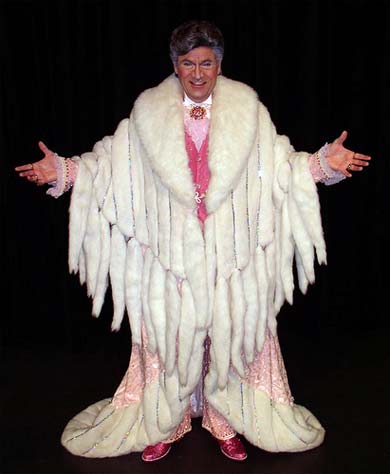
The New Museum’s controversial show of work from billionaire collector Dakis Joannou’s art trove now has a curious new name and a list of artists courtesy of its special guest curator, the artist Jeff Koons. The museum announced yesterday that the show, entitled “Skin Fruit,” would include more than 100 works by 50 artists, including one by Koons.
The artist list stretches from contemporary art stalwarts like Paul McCarthy, Richard Prince, and Franz West to younger figures like Dan Colen, Andro Wekua, and Nate Lowman. New versions of work by Charles Ray, Jenny Holzer, and Robert Cuoghi will also be on display for the first time. (…)
The exhibition is the first edition in a planned series called “The Imaginary Museum” at the New Museum, which will show work from leading private collections from around the world.
{ ArtInfo | Continue reading | Artwork pics | Skin Fruit: Selections from the Dakis Joannou Collection, March 3, 2010 until June6, 2010, New Museum, NYC | Press realease }
An article described concerns in the art world over the propriety of a coming show at the New Museum that will feature the private collection of a museum trustee, Dakis Joannou, and be curated by Jeff Koons. Mr. Koons is an artist whom Mr. Joannou collects extensively, and the article noted that critics of the museum consider it to be enmeshed in what can seem like a dizzyingly insular circle of art world insiders.
Here is an example:
Right now, the museum is devoted to a show of works by Urs Fischer, an inventive Swiss sculptor whose work is owned by Mr. Joannou. Mr. Fischer is represented by the gallery owner Gavin Brown, who also represents the painter Elizabeth Peyton, who had a solo show at the New Museum last year. That was curated by Laura Hoptman, whose husband, Verne Dawson, belongs to Mr. Brown’s stable of artists, too.
{ NY Times, 2009 | Continue reading }
Jeff Koons is scanning his phone machine, hoping to hear a message from an executive at a major Wall Street investment firm. Earlier in the day, a waitress in a Manhattan restaurant had inadvertently handed the executive’s corporate credit card to Koons and Koons’s card to the executive. If the pinstriper could see Koons—street casual in a black polka-dot shirt and fraying black jeans—he might be a bit concerned. But in this case appearances are especially deceptive; unless the exec has been trading on inside information, it’s almost certain that Koons has had the more lucrative first quarter of ‘89. At 34, he is by most estimates the hottest young artist in America—and one of the richest. He is expected to gross about $2.5 million from his most recent show, which was staged—with typical Koons flair—in Chicago, New York City and Cologne, West Germany. Simultaneously.
{ People, 1989 | Continue reading }
art, economics, jeff koons, new york | March 4th, 2010 6:12 pm

Over the past quarter century, DNA evidence has transformed criminal justice, freeing hundreds of innocent people and helping unravel countless crimes that might otherwise have gone unsolved. It has also captivated the public imagination: the plots of popular TV crime shows often hinge on the power of DNA to crack impossible cases, which has helped to give this forensic tool an air of infallibility—a phenomenon known in criminal justice circles as “the CSI effect.” This failsafe image is not entirely unfounded, especially when it comes to traditional applications of DNA evidence.
But increasingly DNA is being used for a new purpose: to target the culprits in cold cases, where other investigative options have been exhausted. All told, U.S. law enforcement agencies have conducted more than 100,000 so-called cold-hit investigations using the federal DNA database and its state-level counterparts, which hold upward of 7.6 million offender profiles. In these instances, where the DNA is often incomplete or degraded and there are few other clues to go on, the reliability of DNA evidence plummets—a fact that jurors weighing such cases are almost never told. As a result, DNA, a tool renowned for exonerating the innocent, may actually be putting a growing number of them behind bars.
{ Washington Monthly | Continue reading }
U.S., genes, incidents | March 4th, 2010 6:12 pm

On Monday, more than a year after a man was arrested outside a market in California with a $3.99 bag of Tillamook shredded cheese in his pants he had not paid for, a judge decided to go relatively easy on him, sentencing him to seven years and eight months in jail.
Prosecutors in Yolo County, Calif., outside Sacramento, had originally asked for a life sentence under the state’s “three strikes” law, arguing that the man, Robert Preston Ferguson, was a menace to society because of prior burglary convictions.
{ NY Times | Continue reading }
photo { Reto Caduff }
U.S., l.a. pros and cons, law | March 4th, 2010 6:11 pm
U.S., smoking | March 4th, 2010 6:05 pm

1 out of every 10 electrons you consume in America comes from dismantled Russian warheads. Half the uranium we consume comes from a program called Megatons to Megawatts. And 20% of our electricity comes from nuclear. Hence 10% of all electricity in this country comes from post-Cold War weapons dismantling. Bombs once pointed at your cities now power them—from swords to ploughshares, indeed.
{ Josh Wolfe Newsletter, Feb 19, 2010 }
U.S., economics, technology | February 25th, 2010 8:50 pm

As an illustration of the approach to media we are proposing, consider the case of Arnold Schwarzenegger’s election in 2003 to the governorship of California. Schwarzenegger’s victory has often been attributed to his status as a Hollywood star, as if that somehow guaranteed success.
But this explanation, in our view, falls far short. If it were adequate, we would have to explain the fact that the vast majority of governors and other political officeholders in this country are not actors or other media celebrities, but practitioners of that arcane and tedious profession known as the law. If Hollywood stardom were a sufficient condition to attain political office, Congress would be populated by Susan Sarandons and Sylvester Stallones, not Michele Bachmanns and Ed Markeys.
Something other than media stardom was clearly required. And that something was the nature of the legal and political systems that give California such a volatile and populist political culture, namely the rules that allow for popular referendums and, more specifically, make it relatively easy to recall an unpopular governor. California has, in other words, a distinctive set of political mediations in place that promote immediacy in the form of direct democracy and rapid interventions by the electorate. It is difficult to imagine the Schwarzenegger episode occurring in any other state.
{ Critical Terms for Media Studies, edited by W. J. T. Mitchell and Mark B. N. Hansen | The University of Chicago Press | Continue reading }
U.S., ideas, l.a. pros and cons, showbiz | February 25th, 2010 8:32 pm
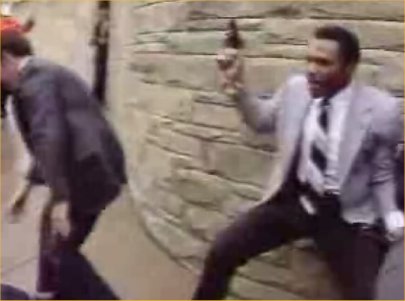
Erotomania is a type of delusion in which the affected person believes that another person, usually a stranger, is in love with him or her.
The illness often occurs during psychosis, especially in patients with schizophrenia or bipolar mania.
Erotomania is also called de Clérambault’s syndrome, after the French psychiatrist Gaëtan Gatian de Clérambault (1872–1934).
The term erotomania is often confused with obsessive love, obsession with unrequited love, or hypersexuality (hypersexuality replaces the older concepts of nymphomania (furor uterinus) and satyriasis.).
{ Wikipedia | Continue reading }
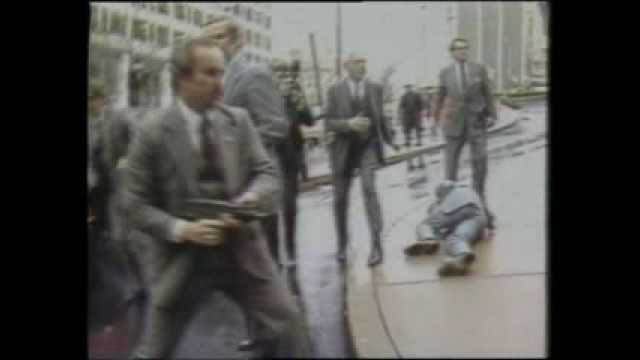
The Reagan assassination attempt occurred in Washington, D.C. on Monday, March 30, 1981.
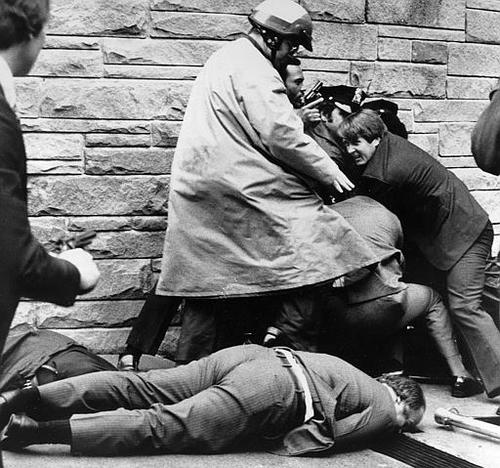

President Reagan and three others were shot and wounded by John Hinckley, Jr. with a .22-caliber pistol.
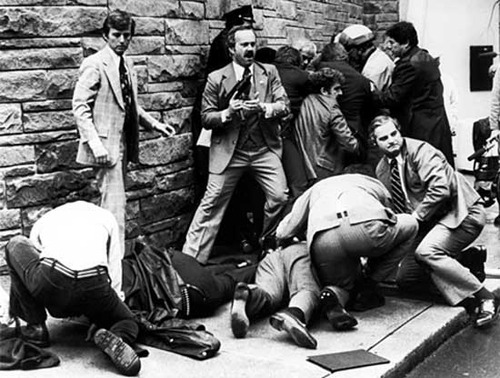

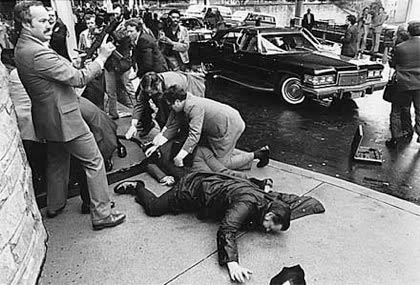
Reagan was the first serving United States president to survive being shot in an assassination attempt.

{ Reagan assassination attempt | Wikipedia | Continue reading | Google Images | Related: In a 1982 speech, President Ronald Reagan declared illicit drugs a threat to America’s national security, putting a too-literal gloss on the phrase “war on drugs.” }
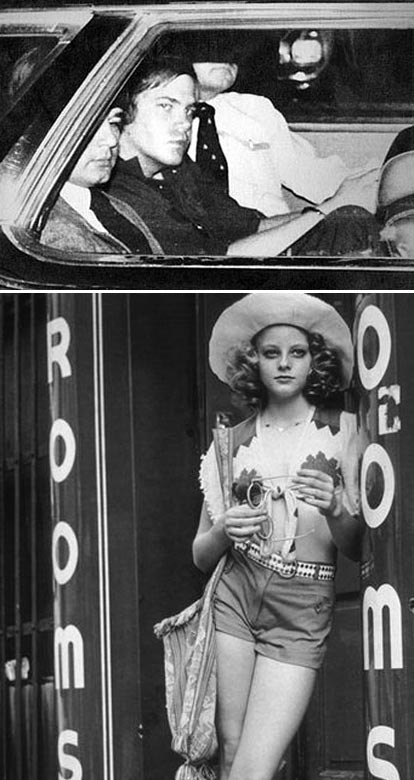
The motivation behind Hinckley’s attack stemmed from an obsession with actress Jodie Foster due to erotomania. While living in Hollywood in the late 1970s, he saw the film Taxi Driver at least 15 times, apparently identifying strongly with Travis Bickle, the lead character.
Hinckley arrived in Washington, D.C. on Sunday, March 29, getting off a Greyhound Lines bus and checking into the Park Central Hotel. He had breakfast at McDonald’s the next morning, noticed U.S. President Ronald Reagan’s schedule on page A4 of the Washington Star, and decided it was time to make his move.
Knowing that he might not live to tell about shooting Reagan, Hinckley wrote (but did not mail) a letter to Foster about two hours prior to the assassination attempt, saying that he hoped to impress her with the magnitude of his action.
{ Wikipedia | Continue reading | The Trial of John Hinckley, 1982 | Hinckley bought two identical .22-caliber revolvers in Rocky’s Pawn Shop in Dallas on Oct. 3, 1980 | Photos: John Hinckley, Jr. | Jodie Foster in Taxi Driver. }
U.S., flashback, guns, incidents, psychology, relationships, visual design, weirdos | February 18th, 2010 5:19 pm

In 1966, William Labov, the father of sociolinguistics, discovered that many people with New York accents — the stock Noo Yawk kind — didn’t like the way they talked. It was kind of sad. Labov found widespread “linguistic self-hatred,” he reported. People from New York and New Jersey described their own speech as “distorted,” “sloppy” and “horrible.” No wonder those great old accents came to be regarded as a class giveaway, to be thrown over in the name of assimilation, refinement and the acquisition of Newscaster English.
But that was the ’60s, back before the never-ending you-tawkin-t’me aria was enshrined in movies like “Mean Streets,” “Saturday Night Fever,” “Working Girl” and, of course, “Taxi Driver.” Before long, people were consciously cultivating the once-despised dialect. Now an extra-hammy version of the accent — which thrives in the New York City area, including northern New Jersey — is a point of fighting pride, most recently among the brawling bozos on MTV’s captivating and incendiary reality show “Jersey Shore.”
{ NY Times | Continue reading }
Johnny Boy: Y’know Joey Clams…
Charlie: Yeah.
Johnny Boy: …Joey Scallops, yeah.
Charlie: I know him too, yeah.
Johnny Boy: …yeah. No. No, Joey Scallops is Joey Clams.
Charlie: Right.
Johnny Boy: Right.
Charlie: …they’re the same person!
Johnny Boy: Yeah!
Charlie: ‘ey!
Johnny Boy: ‘ey…
{ Mean Streets, 1973 }
artwork { Mo Maurice Tan }
Linguistics, new york | February 4th, 2010 9:10 am
art, guide, new york | January 28th, 2010 5:32 pm
U.S., new york | January 14th, 2010 6:08 pm














